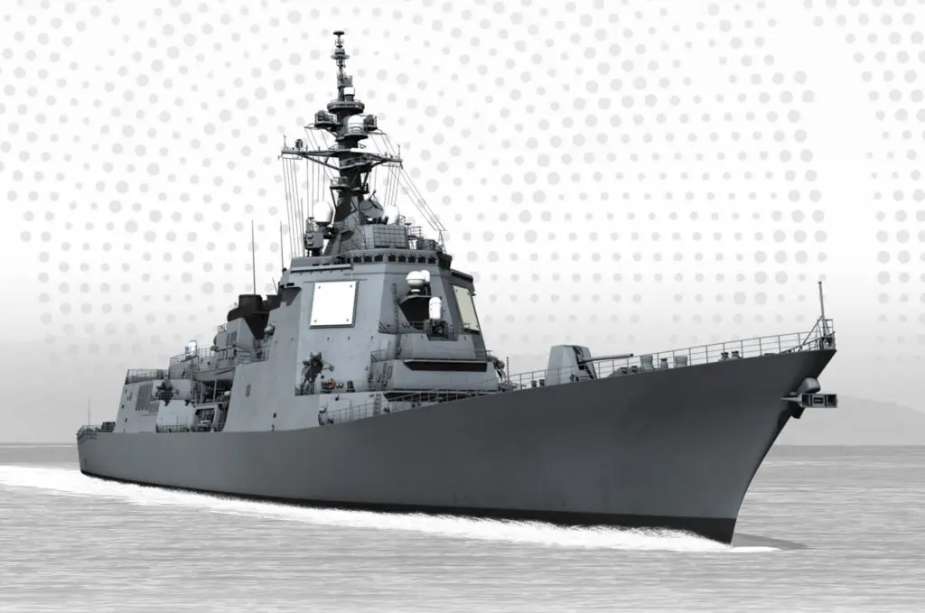Breaking news
Lockheed Martin achieves first live track with SPY-7 radar for Japan’s Aegis System Equipped Vessel ASEV.
On April 4, 2024, Lockheed Martin reported from its Production Test Center in Moorestown, New Jersey, the first live track demonstration of the AN/SPY-7(V)1 radar on an Aegis System Equipped Vessel (ASEV). The demonstration showcased the SPY-7 radar's capability to track space objects, using its tactical hardware and software, which serves as an initial step towards assessing its operational readiness and begins a detailed performance evaluation phase.
Follow Navy Recognition on Google News at this link
 The ASEV vessels will employ the SPY-7 radar system, initially acquired for the Aegis Ashore system, instead of the SPY-1 radars used by the Japanese Navy. (Picture source: Lockheed Martin)
The ASEV vessels will employ the SPY-7 radar system, initially acquired for the Aegis Ashore system, instead of the SPY-1 radars used by the Japanese Navy. (Picture source: Lockheed Martin)
This step is indicative of the system's ability to perform its intended operational functions. Amr Hussein, Lockheed Martin's Vice President of Multi-Domain Combat Solutions, explained the company's procedure for testing the Aegis and SPY-7 systems prior to their delivery to Japan, with the aim of identifying and mitigating potential risks and ensuring the systems are fully evaluated and adjusted. The next stage of the project includes rigorous testing of the SPY-7 radar system alongside the Aegis Weapon System equipment, prior to their shipment to Japan. This testing is essential to confirm the systems' operational capabilities and reliability in a defense context.
The Aegis Combat System, initially developed by RCA's Missile and Surface Radar Division and currently produced by Lockheed Martin, employs computers and radar to detect and direct weapons for the neutralization of enemy targets. This system is integrated into both guided missile cruisers and destroyers, having been first used by the United States Navy and later adopted by the navies of Japan, Spain, Norway, South Korea, and Australia. Presently, there are over 110 ships equipped with the Aegis system, and there are plans to equip an additional 71 ships.
The core of the Aegis Combat System is the Aegis Weapon System (AWS), which consists of the AN/SPY-1 Radar, MK 99 Fire Control System, Weapon Control System, Command and Decision Suite, and the Standard Missile family. These elements enable the system to conduct anti-air warfare, anti-submarine warfare, and missile attack operations, including the deployment of Tomahawk Land Attack Cruise Missiles. The system is designed to engage multiple threats simultaneously through a coordinated network of radar and missile technology. Additionally, the Aegis system has been adapted to include ballistic missile defense capabilities, as well as for use in a land-based system named the Aegis Ashore Missile Defense System (AAMDS).
The Japan Ministry of Defense intends to incorporate the SPY-7 radar system into two Aegis system-equipped vessels (ASEVs), with the goal of improving the country's defensive capabilities against a range of threats. Chandra Marshall, Vice President of Radar and Sensor Systems at Lockheed Martin, stated that the SPY-7 radar utilizes developments from the Long Range Discrimination Radar (LRDR) program to enhance its detection and tracking abilities. Developed by Lockheed Martin, the LRDR, identified as AN/SPY-7, is crucial to the United States' Ground-Based Midcourse Defense system, tasked with the early detection and assessment of ballistic missile threats.
This radar system employs gallium nitride (GaN) within its solid-state active electronically scanned array (AESA) to facilitate uninterrupted operation, including during maintenance periods. The system's modular design allows for adjustments in size and capabilities according to specific needs. The LRDR's technology has also been adapted for the AN/SPY-7(V)1 variant, which is used in the Aegis Ballistic Missile Defense System and selected by countries including Canada for the primary radar system on its forthcoming Canadian Surface Combatant ships and Japan for its Aegis Ashore installations and its Aegis System Equipped Vessels (ASEVs).
The Aegis System Equipped Vessels (ASEVs), planned by the Japan Maritime Self-Defense Force, represent an adaptation in naval defense, with a focus on missile defense capabilities aimed to substitute the Aegis Ashore system. These ships are a response to evolving missile threats, catalyzed by missile tests from North Korea. With a construction timeline beginning in 2024 and service commencement anticipated in 2027, these vessels are intended to offer a movable platform for missile defense. Featuring the Aegis Weapon System (AWS) and equipped for joint engagement capabilities, the ships are designed with a standard displacement of 12,000 tons, a length of 190 meters, and a width of 25 meters. Their propulsion is managed through a COGLAG engine system, combining gas turbines and electric motors to achieve speeds of approximately 30 knots, and they are expected to house around 240 crew members. The armament comprises a 5-inch gun, high-performance cannons, Mk.41 Vertical Launching Systems (VLS) with 128 cells, and an array of missiles intended for a broad spectrum of air and missile defense tasks.






















